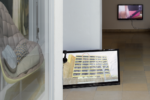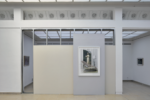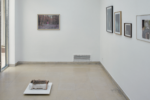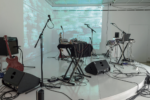What Some Girls Do For Money
Swetlana Heger, Susi Jirkuff, Sabine Marte, Ursula Mayer, Karina Nimmerfall, Viktoria Tremmel
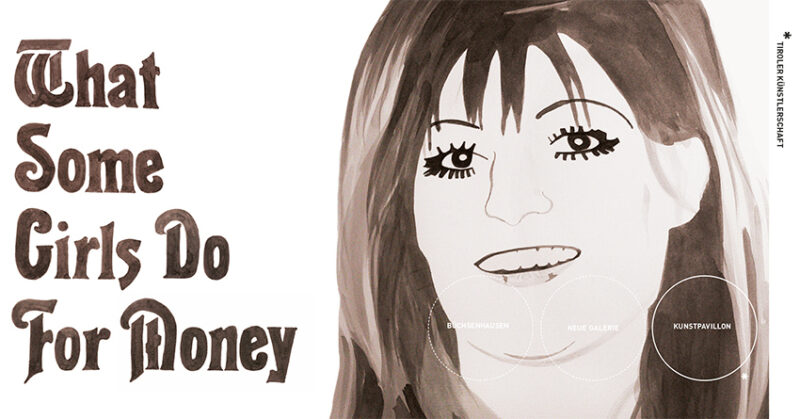
What Some Girls
Do For Money
Swetlana Heger, Susi Jirkuff, Sabine Marte, Ursula Mayer, Karina Nimmerfall, Viktoria Tremmel
Opening: 20.11.2015 with a music performance by Pendler.
What Some Girls Do For Money explored the gaps between fantasy as produced in the media and the everyday reality suggested by the exhibition title. In this context What Some Girls Do For Money functioned as a kind of slogan, allowing a wide range of possibilities and interpretations. Superficially, What Some Girls Do For Money was a reference to the simulated outrage of some of the tabloid press, which were the very ones to give space to voyeuristic images. The desire for luxury, elegance and prosperity aroused with such media fantasies correlated to the longing for a better life, which may possibly have driven the “girls” in question.
The wish to escape the inevitability of one’s biography, to overcome social conditions or specific clichés of the artist, as well as a surrender to hedonism, are radical concepts; true, they are omnipresent as demands in the media, but they cannot be realized without immense difficulty. Our title pointed to another, succinct and pragmatic aspect – the issue of concrete working conditions: dirty work, routine, drudgery, casual jobs. There, too, the cliché – although it is often translated into a documentary format – is a projection that needs to be questioned.
Ultimately, the context also encompassed a reference to one’s own artistic work. On the one hand, as an ironic commentary on one’s own working situation, in which casual jobs were often taken in order to make work as an artist possible, on the other hand as an aspect of the paradoxical ambivalence of art and money, a work and its market value.
Various artistic approaches and concepts by six artists were presented as part of the exhibition. The often very different methods and points of contact ranged from analysis of the artistic environment and its economic structures to investigations into the power of the media and images of the luxurious and elegant, to the mechanisms of creating scandal, and even to the depths of trash.
The relations between the works were deliberately underlined via the exhibition’s special design as an installative, stage-like situation; this revealed possible links and cross-references and created a contextualization with reference to the title.
Swetlana Heger
The Most Beautiful Women (in the Art World), #1 Dasha, collage, variable dimensions, 2015-ongoing
This work by Swetlana Heger investigates the presentation of contemporary art in the context of art fairs and biennial events. It is a well-known fact that it is the principles of the free market that primarily shape relations between artists and buyers, without proper regulation or legal security, but in the course of globalization, excessive aspects of this development are leading to ever more scurrilous outcomes. Besides a broad and precarious community of artists made up of self-exploiting producers, a debonair jet-set audience has therefore evolved: at biennale parties and Art Basel events, they select the work for which they will quickly lay out several thousand dollars. As Isabelle Graw describes in her 2010 book “High Price,” art’s primary function now seems to be as a platform for celebrity culture, turning the artist into a cuddly toy for the oligarchs.
Heger’s work hereby touches on the paradoxes of making and marketing art, the general positioning of art in society, and the roles offered to artists in this process.
Susi Jirkuff
Ginny, HD video, 5 min, 2015
Gracie, HD video, 6 min, 2015
Susi Jirkuff showed two new video works that evolved from her studies of economic developments and urban space. Two fictive girl characters are introduced, each in a spatially accentuated setting: Ginny, who has thrown a cat off a high-rise building several times, with friends providing a £5 camera to film the action, and Gracie, whose dream job is fashion blogger, although she doesn’t know whether she will still have electricity for her computer by the end of the month.
Both are children of the precarious new way of life, falling further and further behind in the wake of neo-liberal economic policy, in an age when no chances of improvement are guaranteed.
Sabine Marte
Farewell to Hell, video, 2015
Sabine Marte works primarily with performance, video and sound, and this is also true of her latest video work Farewell to Hell. Space and volume clash, rhythm and voice create a hypnotic setting whose psychotic and surreal worlds suck people in.
Vibration and movement make the film into a physical experience as well, while the film itself becomes a performer on stage.
Ursula Mayer
The Unbegotten: Anti-Species, Conceptual flesh, Dying with- out Death, series of framed color photographs, 2013
The photo edition The Unbegotten was created for the solo exhibition BUT WE LOVED HER by Ursula Mayer at the 21er Haus in Vienna. Transgender model Valentijn de Hingh and musician J. D. Samson come together in a sculpture by Bruno Gironcoli. The androgynous, metallic bodies are integrated into Gironcoli’s sculpture and merge with it.
Such beauty and perfect surfaces make us think of the cinematic opulence of Hollywood movies from the 30s, but there is less exaggeration in the photographic staging and instead a very tangible approach to the material and the sculptural, as well as a representation of bodies and gender images fluctuating between rigidity and vitality.
Karina Nimmerfall
Life as an Art Form, installation, 2015
New housing projects in urban metropolises all over the world today seem above all to reveal a return to bourgeois housing culture with reference to “modern living.” The interesting aspect here is that besides adapted concepts of modernity – like, for example, light and air via large glass façades or an open design of space – the stylistic formal language of the eighteenth century is being adopted: luxury (again) lies in the (historicizing) details.
The starting point of the project Life as an Art Form (the title quotes an estate agent’s advertising slogan) was the artist’s engagement with visualizations and image films of the real- estate business, with special reference to (female) role images and contemporary notions of ideal housing / living.
The computer-generated interior inserted into a three-dimensional mural tableaux consists of a combination of common furnishing details from (luxury) real-estate portfolios, which are then, however – and for the viewers only at second glance – undermined subversively: the iconography of diverse furnishing details then uncovers traces of the history of politically committed women and the (radical) women’s movement.
Viktoria Tremmel
Untitled, series of collages, 2015
Viktoria Tremmel showed a selection of collages that concealed more than they revealed. The apparently painterly works reflect inner conditions rather than providing concrete narrations. Fragments of pictures, overlapping, covering and revealing, create microdramas within the field of the image. As a series, later they disclose a poetic legibility after all, albeit interrupted and dreamlike, in which an intimate parallel world can be constructed. She exhibited the fragmented body images in contrast to a toned photographic work showing a strangely wrapped, column-like sculpture in a forest, and to a torso-like object with spindles attached to it with pairs of tights.

